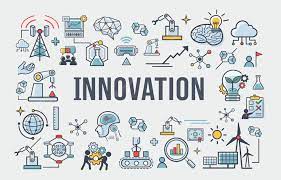How A Growth Mindset Fuels Innovation
There are often two types of leaders: those who keep evolving (growth mindset) and those who are static (fixed mindset). These concepts stem from Dr. Carol Dweck’s research on human motivation. It presents two ideas: intelligence can be developed (growth) or left unchanged (fixed).
In my experience, for organizations to stay relevant, leaders must always be adapting—seeking growth—to the ever-changing landscapes they are in. And a leader’s ability to employ lifelong learning fuels innovation.
Once a year, I hold a retreat with our executive team to assess where we are and where we need to go. I call it a “New Curve Retreat” because we follow the Sigmoid function (S-shaped curve). We have learned that when we reach our most successful point, it’s time for us to start a new initiative. The key to innovation and staying ahead of the curve is to not wait until your organization is in decline but to adapt when everything is going extremely well.
Leaders who are development oriented can take their organizations to places they have never been before. Based on my experience in higher education, here are five steps a growth mindset leader can take to spur innovation.
1. View obstacles as opportunities.
Growth almost always guarantees you will face challenges. You may hit a point where it feels difficult or impossible to keep pushing forward, especially when it’s into unknown territory. When you cultivate a growth mindset, it teaches you to face challenges head-on. Instead of cringing from opposition, learn to engage, process and solve problems.
With this perspective, you recognize that failure isn’t only inevitable in the change process; it’s integrally connected to your success. As you seek to grow, problems will arise—some anticipated and others that are impossible to predict. Focus on the journey rather than the results. And when you face a challenge, view it as an opportunity.
2. Prioritize collaboration.
Leadership shouldn’t be a lonely endeavor. You most likely are surrounded by people who you trust and who can help the organization move forward. Whenever I navigate new situations, I prioritize meeting with other leaders from various departments at our organization. I recognize that progress requires the input of others.
A study by Salesforce revealed that 86% of executives “identify ineffective collaboration and communication as a major cause of failure in business.” You have a remarkable amount of talent in your organization. Activate it by allowing others to be a part of the growth process. Deploy the skills of listening and seeking feedback—and be adaptable to the changes they recommend.
3. Develop a sense of curiosity.
Don’t fight change. Rather, learn how to take advantage of it. Working in higher education, I learned the value of keeping a pulse on the latest trends and where the industry is headed. We always strive to be at the forefront of change because we don’t want to become irrelevant.
When you develop a sense of curiosity, you embrace humility (recognizing the necessity of continual learning), and you consistently seek ways to improve. It requires you to never settle for where you are, to gain different perspectives by asking questions, and to explore alternatives for pathways to move toward your goals.
4. Value relationships.
When I first began my tenure as a president in higher education, I remember walking our campus and stopping to talk to a groundskeeper. I asked him what he was doing. I expected him to say exactly what he did, maintaining the campus’s landscape. Instead, he articulated our new mission statement. That’s when I recognized the value of relationships in the growth process.
Teams are more likely to accept change as a catalyst for good than see it as a threat when they are aligned and unified. You must continually build and prioritize trust. Focus on how you can help others develop, be a part of the pathway forward, and understand their role in the mission.
5. Create a map to a goal.
Before you can hit the ground running toward a new initiative, you must create a guide to what’s next. One of our goals at the university was to quadruple our enrollment (something we accomplished this year). But we knew before we embarked on this objective, we needed to have a framework that would guide us to where we were headed.
Developing a map can provide you with structure, a rationale, and a method for moving your organization forward, even when the destination is unclear. It functions as a tool for you as you manage both the possibilities that change offers and the fear of the unknown that summons.
Breakthrough within an organization happens when leaders are willing to go through change. If you aren’t willing to embrace change, you will reap the same results you always have. Learn to embrace a growth mindset by developing your leadership skills, seeking innovative solutions and stepping out of your comfort zone.
Source: entrepreneur.com
Cc: Kent Ingle




